Isobel Currie’s love of thread and fine work was nurtured by her mother and developed in her studies at Manchester Polytechnic, now Manchester Metropolitan University. She creates breathtakingly intricate work using simple, traditional hand stitches, which she puts her own twist on by exploring their three-dimensional potential.
In this article, which is part of our From Conception to Creation series, Isobel discusses the creation of Fly Stitch Autumn Landscape, a piece that has been exhibited by the famous 62 group of textile artists, of which the artist is a keen and active member.
Name of piece: Fly Stitch Autumn Landscape
Year of Piece: 2017
Materials used: Perspex box, organza fabric, cotton threads, glass beads
Techniques used: Hand embroidery, drilling
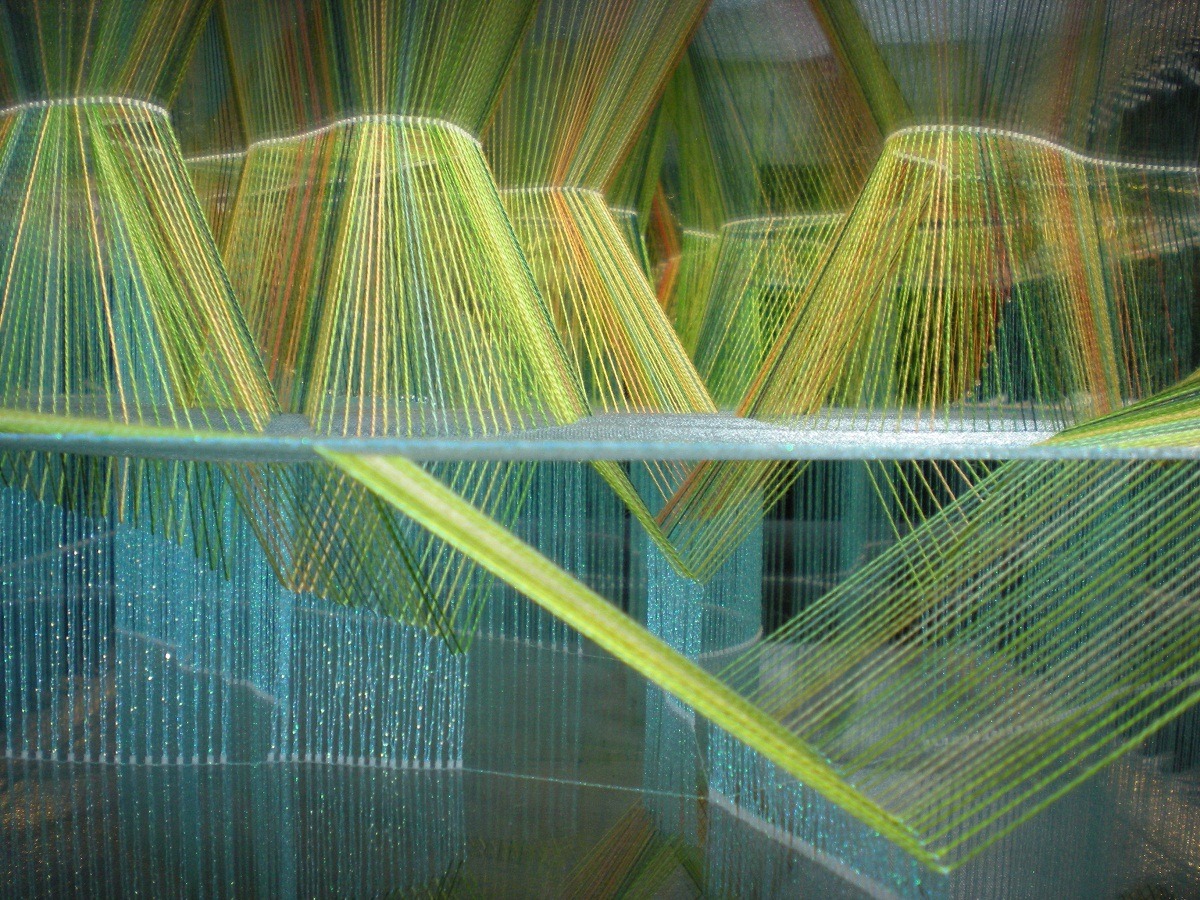
Exploring landscape through light and colour
TextileArtist.org: How did the idea for the piece come about? What was your inspiration?
Isobel Currie: In of all my work, stitch is the inspiration.
My continuing interest is in exploring the three-dimensional nature of stitch. The way that thread travels through space, interacts with various surfaces and itself to create sculptural shapes. I seek out three-dimensional forms that I can render in stitch. Inspiration comes from the geometries, patterns, rhythms and shapes found in natural landscapes. Often times there is a beautiful combination of order and structure with variation and change.
I had used fly stitch in a previous work Fly Stitch Sand Ripples and felt that it had further potential. In that piece, I used the stitch in parallel lines and the underneath ‘catching’ thread which forms the ‘V’ shape was hidden under fabric.
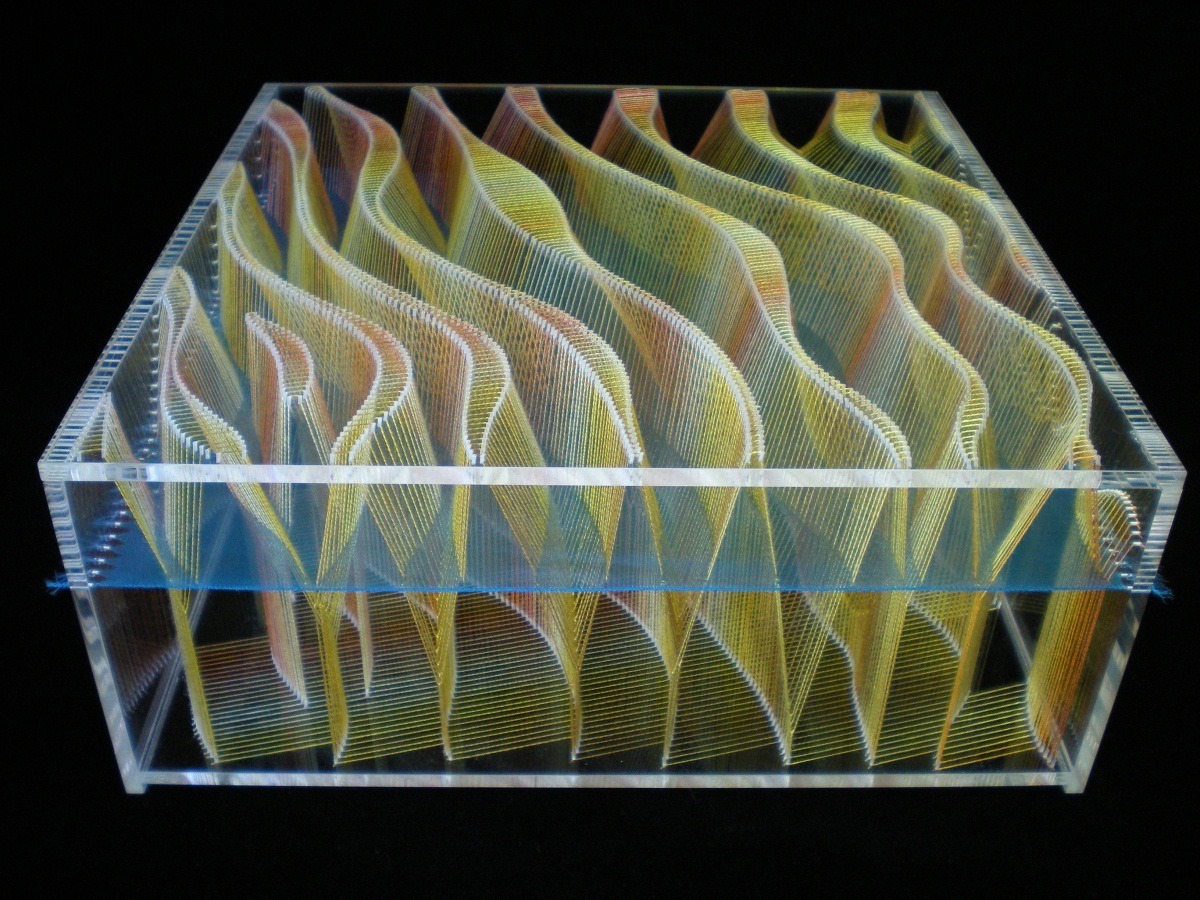
My interest whilst creating Fly Stitch Autumn Landscape was in more organic, complex stitch patterns. I also wanted to accentuate the ‘V’ shape of the stitch.
The previous work depicted a small piece of beach, but I could see that the stitch forms could also represent a whole landscape in miniature. I wanted to depict a landscape that contains rivers and lakes with the water level represented by a piece of organza fabric through which the stitched thread landscape traveled.
Colour is always an important inspiration to me. I enjoy the subtle shifts and diverse depth of colour in natural landscapes. In this work, I wanted to use the rich heightened colours that are seen in the low sunlight of the evening. Colours were initially researched during spring and summer, but as I stitched the work during the autumn months and continued visiting the nearby countryside the changing hues influenced the final colour palette used.
What research did you do before you started to make?
I wanted to use a real landscape, as nature often introduces interesting quirks that a designer would not think of! I was looking for a landscape with a varied topography. An area where streams begin in high ground and gradually form deeper valleys. The deeper valleys then opening out into a wider body of water with gently sloping hillsides.
I studied maps of the beautiful Derbyshire Peak District near my home and chose Howden reservoir along with its surroundings for my design. I visited the area to see how the hills and valleys interacted and also recorded the colours of the landscape. The shades from the rocks, heathers and brackens of the high ground, dark wooded areas and the lush bright greens and golds lower down in the valleys.
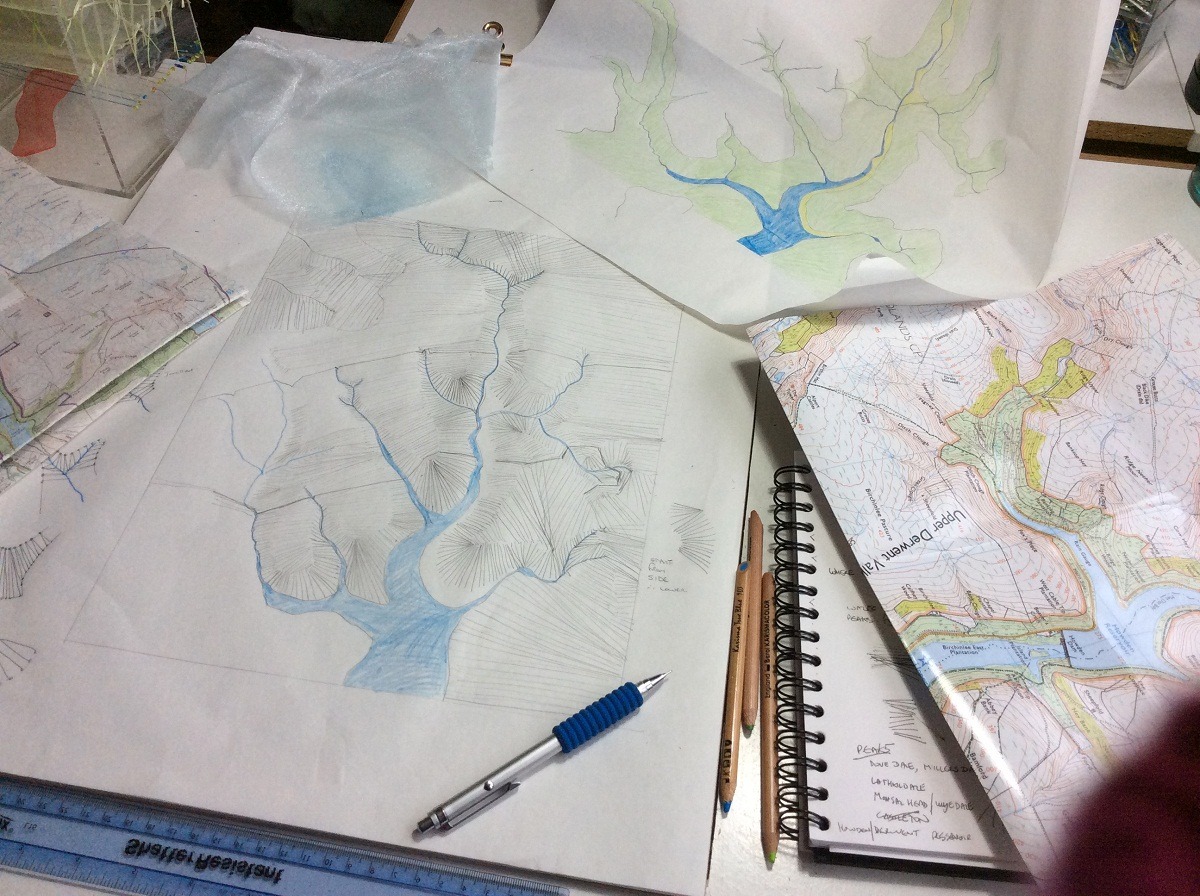
I tested three-dimensional stitch ideas in a Perspex sampling box, searching for ways to make the stitch lines look more organic. Using this I found that I could work several lines of thread through one drill hole. This enabled the fan shapes of threads and allowed for changes in direction. It also took several attempts to find a satisfactory way to depict the meeting of valleys.
Another decision to be made is the size of the work. I prefer to work at a small scale and wanted the threads stitched close together to form the shapes. Even with the small scale, I had to ensure that I could get my hands inside the box to do the stitching. I pushed this to its limit and chose a box size of 45 x 34cm with an internal depth of 10cm in height.
The box does influence the design, as there are limits to how close together the holes can be drilled. In this work, I explored ways to improve these constraints and increase the complexity of the work to better capture the chosen landscape image.
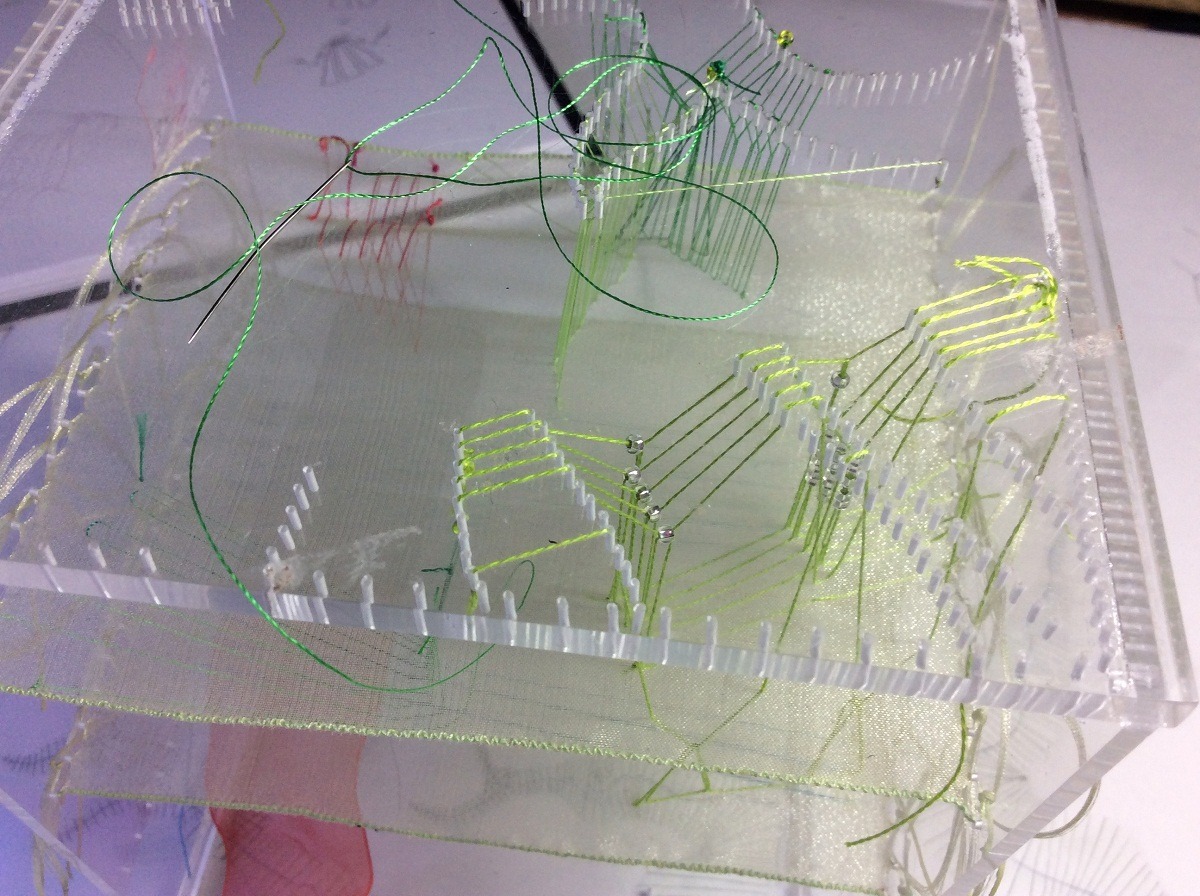
Visualising in three dimensions
Was there any other preparatory work?
My preparatory work is akin to technical drawing; written notes, tables, scale drawings and calculations, produced with a 0.5 propelling pencil on plain paper along with sketches and diagrams.
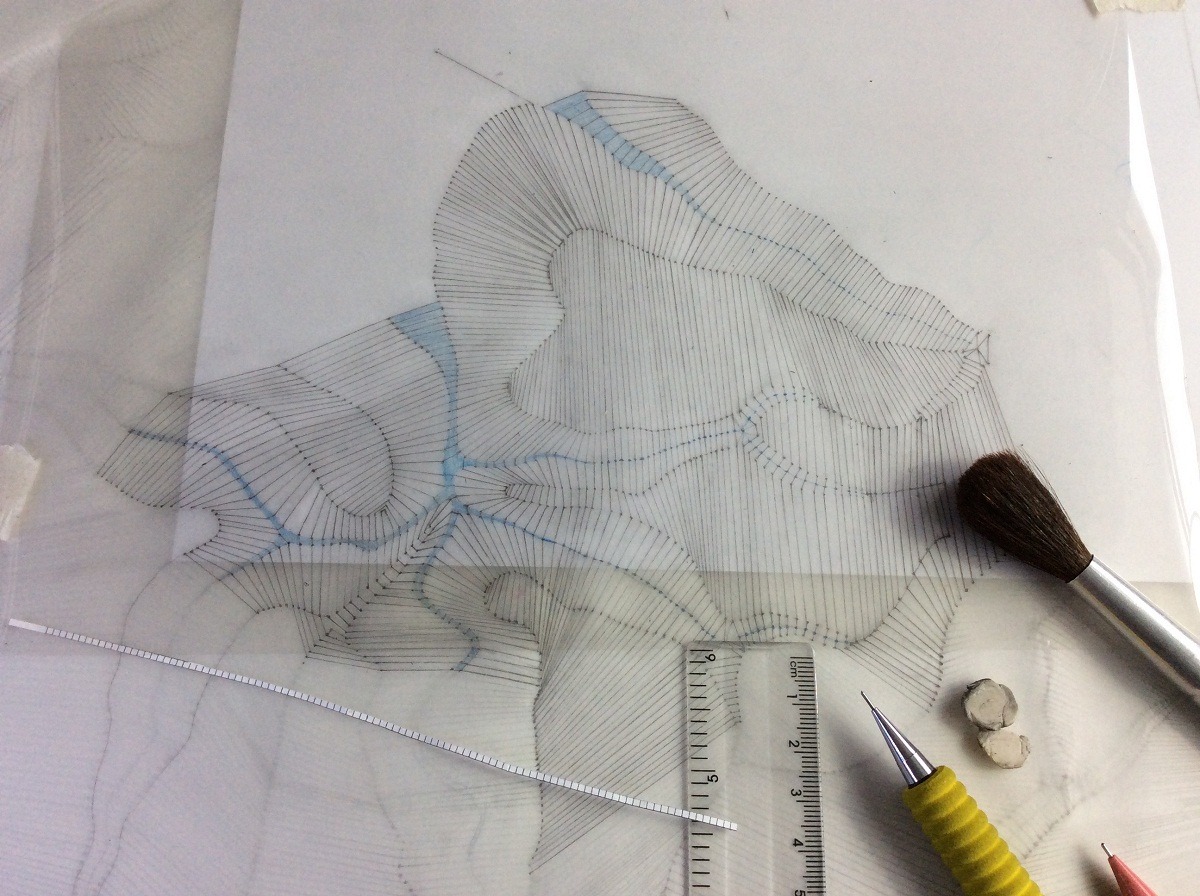
Final patterns, plotting drill holes and thread paths are drawn on a computer for accuracy, using graphic software. This is quite a laborious process, but necessary to ensure that all the lines of thread are accounted for.
Some of the lines of thread turn back on themselves or spiral round each other. I also have to check that drill holes are a viable distance apart from each other.
Despite this careful managing of detail, often I am not sure that the stitching will be physically achievable. When I start, I never know exactly how the finished work will look, as the three-dimensional aspect is difficult to visualise.
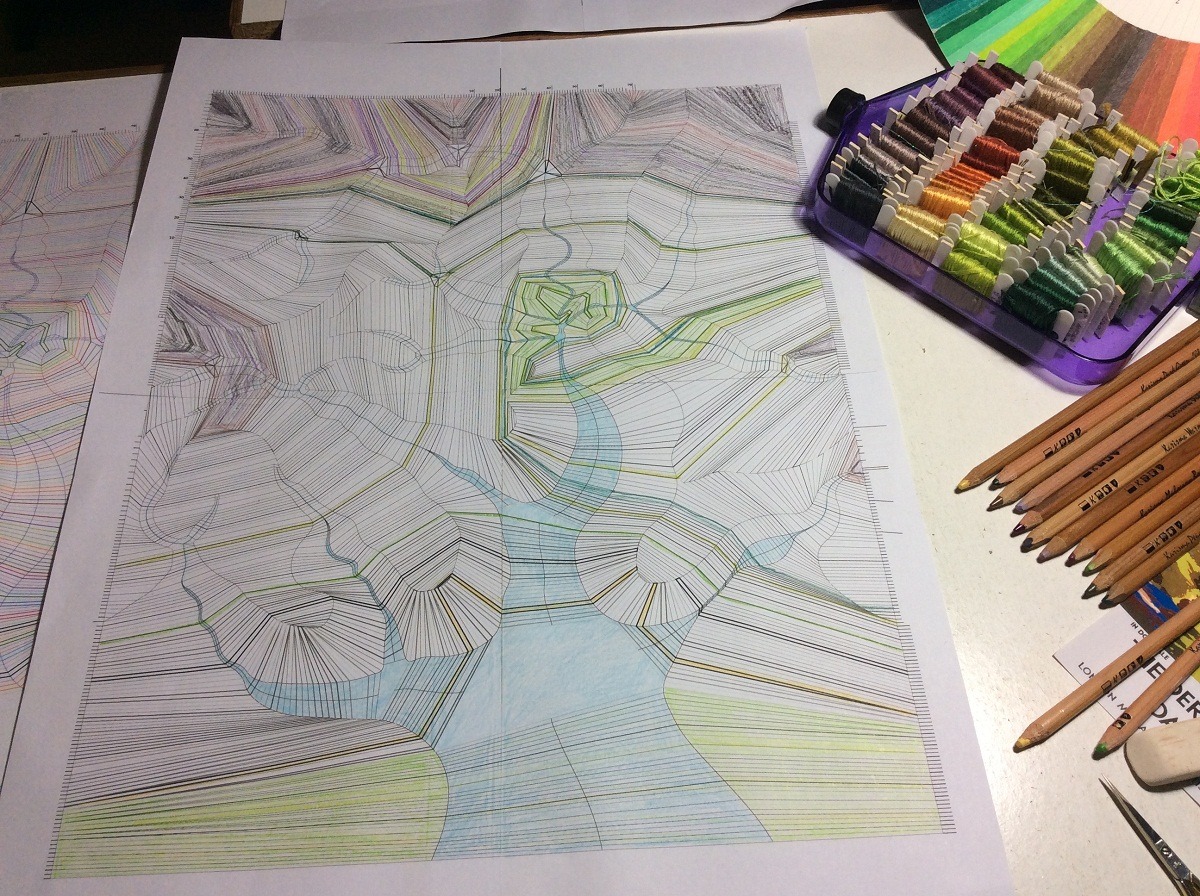
What materials were used in the creation of the piece? How did you select them? Where did you source them?
Because my work is an exploration of the sculptural potential of stitches, I choose supporting materials that are transparent or translucent, to allow the stitch shapes to be seen.
For some years I have found that clear Perspex boxes give me a great deal of artistic freedom to explore three-dimensional embroidery. The box for this piece was made to my specifications by a local plastics fabricating company, Plastic Formers.
The organza fabric used has similar translucent qualities making it appropriate to depict water. It was purchased from Abakhan Fabrics.
The threads are stranded cottons used by many cross-stitchers and embroiderers throughout the world. I enjoyed employing this traditional hand embroidery thread in a modern style creating an accessible link between more conventional forms of embroidery and my work.
Like most stitchers, I already had many of these threads in my possession! I also chose to use stranded cotton due to the great colour range available to depict the subtle changes of hue across the landscape.
I wanted to suggest trickles of water gathering down the valleys to join the rivers. To achieve this effect I added little silver beads at the bottom of the ‘V’ shapes of some threads. Because of the small scale of the work they are the tiniest beads available and were sourced from my favourite bead shop, Spellbound beads.
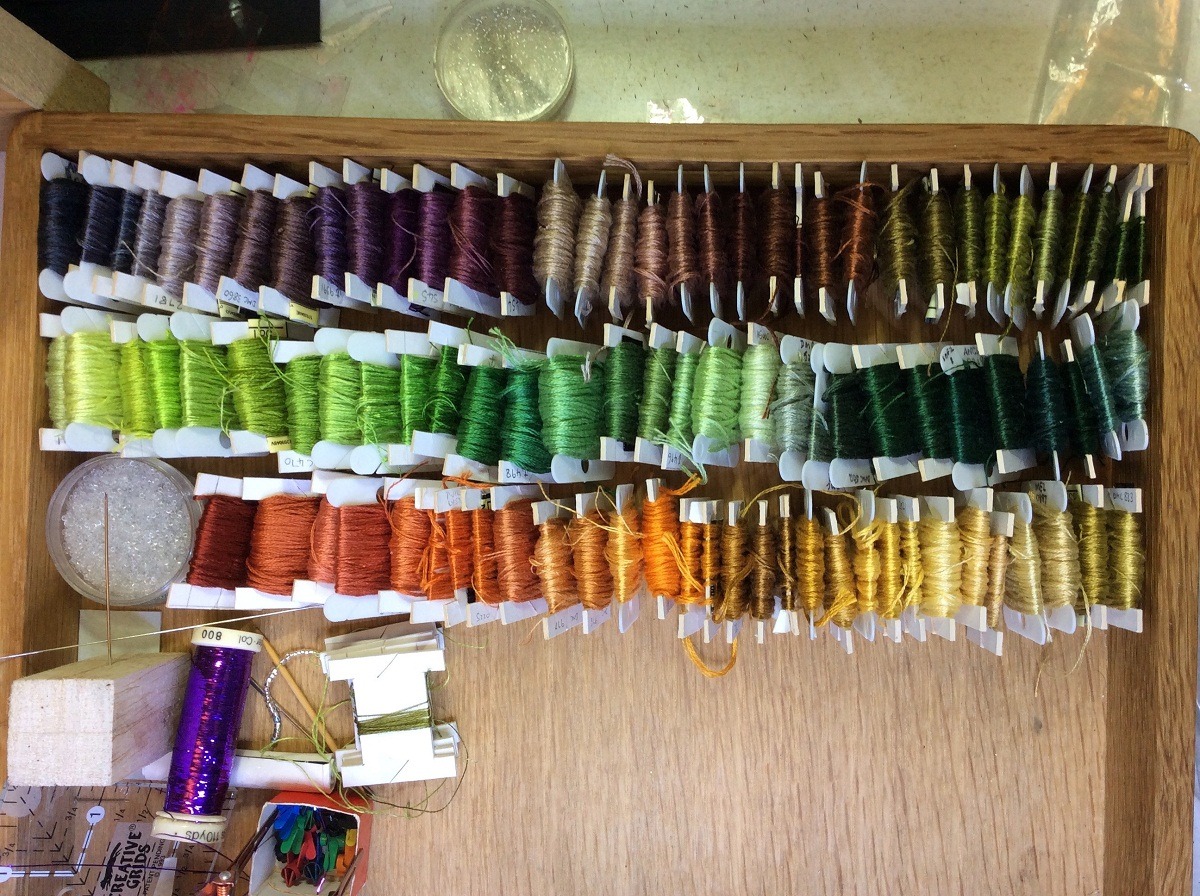
What equipment did you use in the creation of the piece and how was it used?
I use a Dremel craft drill to make the holes in the box but otherwise use very little equipment.
My main tools are small, fine needles, sharp scissors and long fine tweezers. The tweezers help to pull the needle in the middle of the work, where it is difficult to get my hand in.
I do have a specially built shelf on my desk with runners on which to place my work. This shelf allows me access to stitch the top and base at the same time.
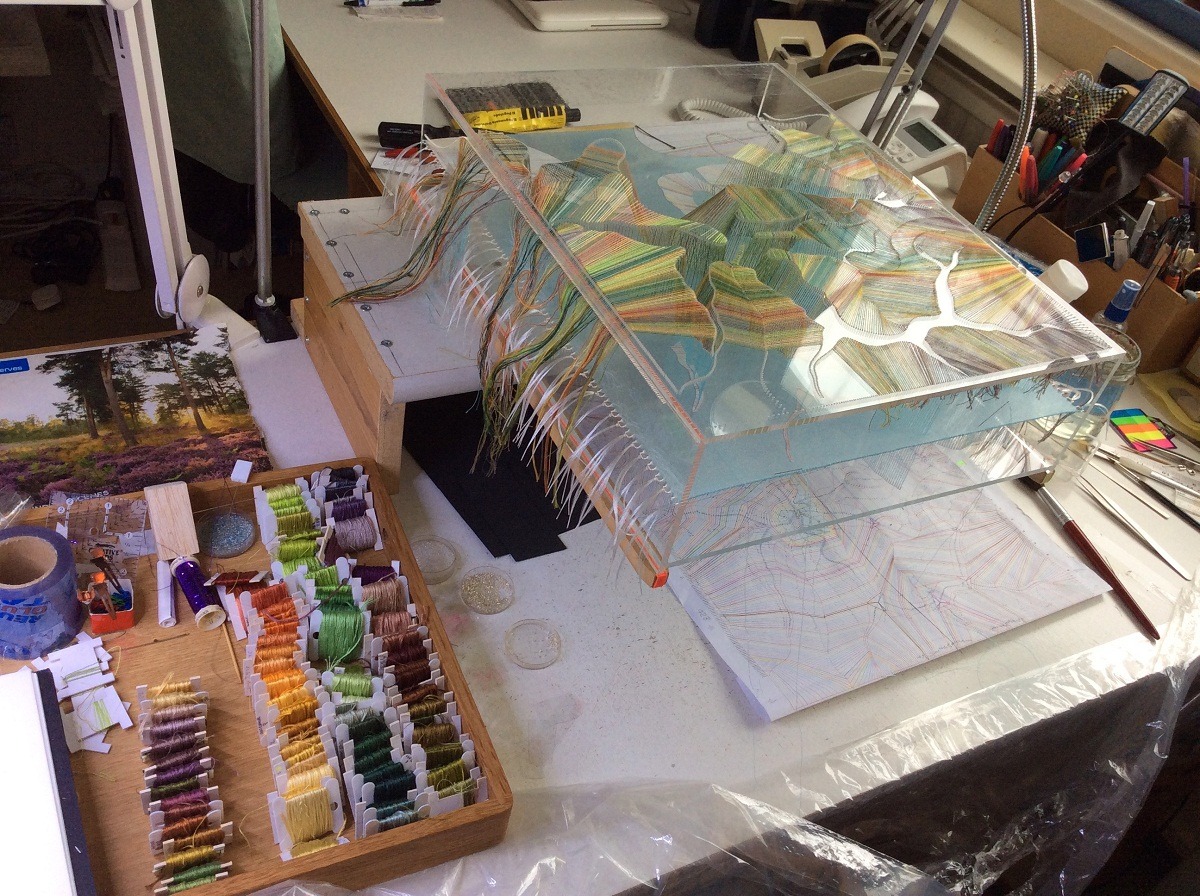
Patient craft
Take us through the creation of the piece stage by stage (techniques used and how)
Drilling was the first process. I glued a paper pattern to the box to guide where the holes need to be. The drill is on a fixed rig and I move the box around into position under it. There were 4862 holes in this work which took 18 hours of drilling over 3 days. This is the most tense part of the creation if I miss-drill the box is irreparable.
Following a lot of cleaning and polishing of the box, a constant challenge during the work with dust and fingerprints, I prepared and attached the organza fabric. Next, the pattern is laid on the fabric to show where the threads needed to enter.
One of the main considerations, on which much time was spent, was the order in which the lines of stitch would be worked. There was a danger that some areas would become inaccessible if stitched in the wrong order. To prevent this from happening, some threads had to be partially stitched and set aside whilst another thread was worked.
The thread colours were selected as I went along using a palette of almost 100 colours, and following a sketch for continuity.
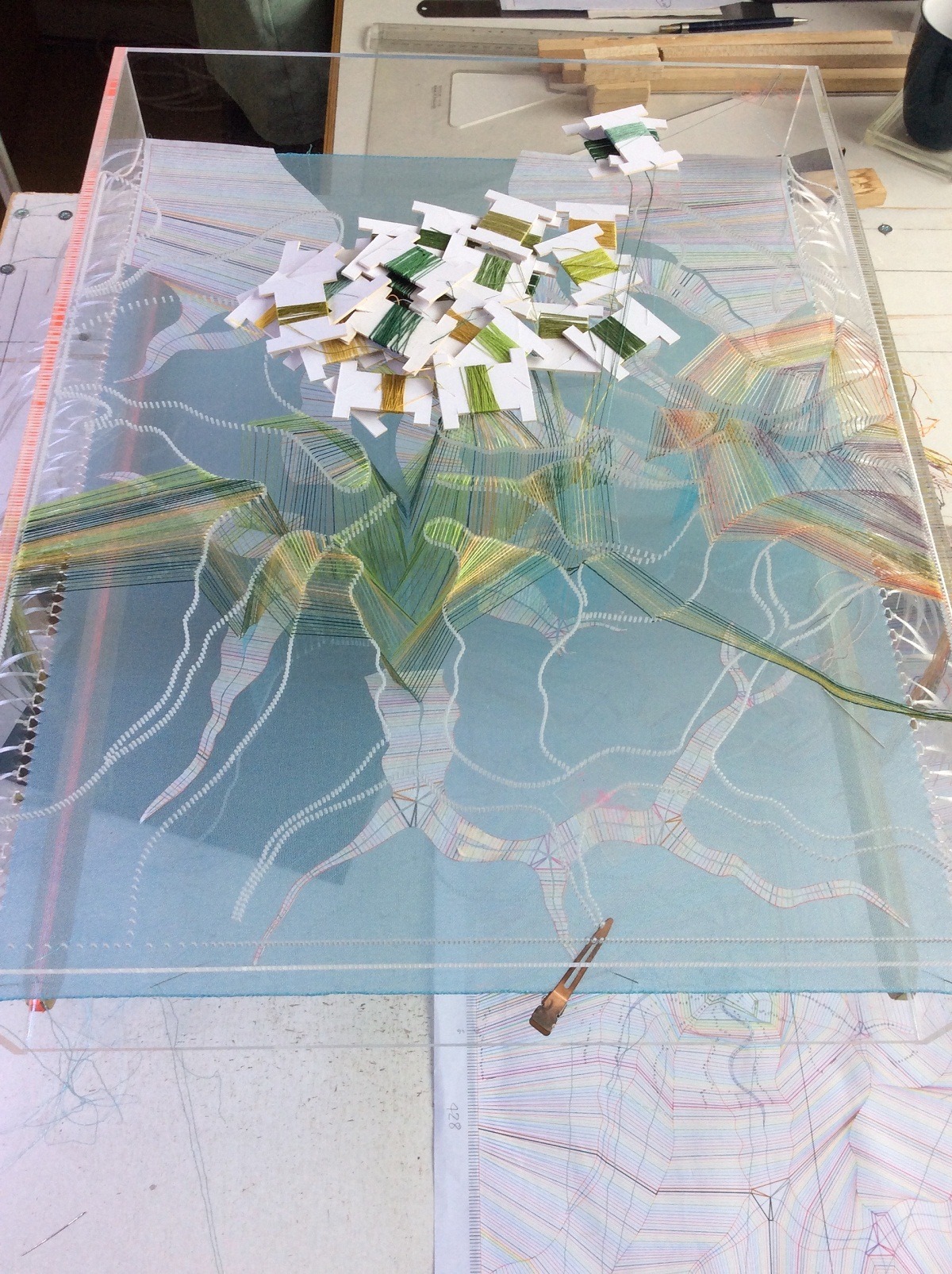
Finally, the threads were finished off down the sides of the work by knotting and trimming them. The stitching took approximately 210 hours in total over a period of just over two months. From state to finish overall time of conception to completion was closer to a year.
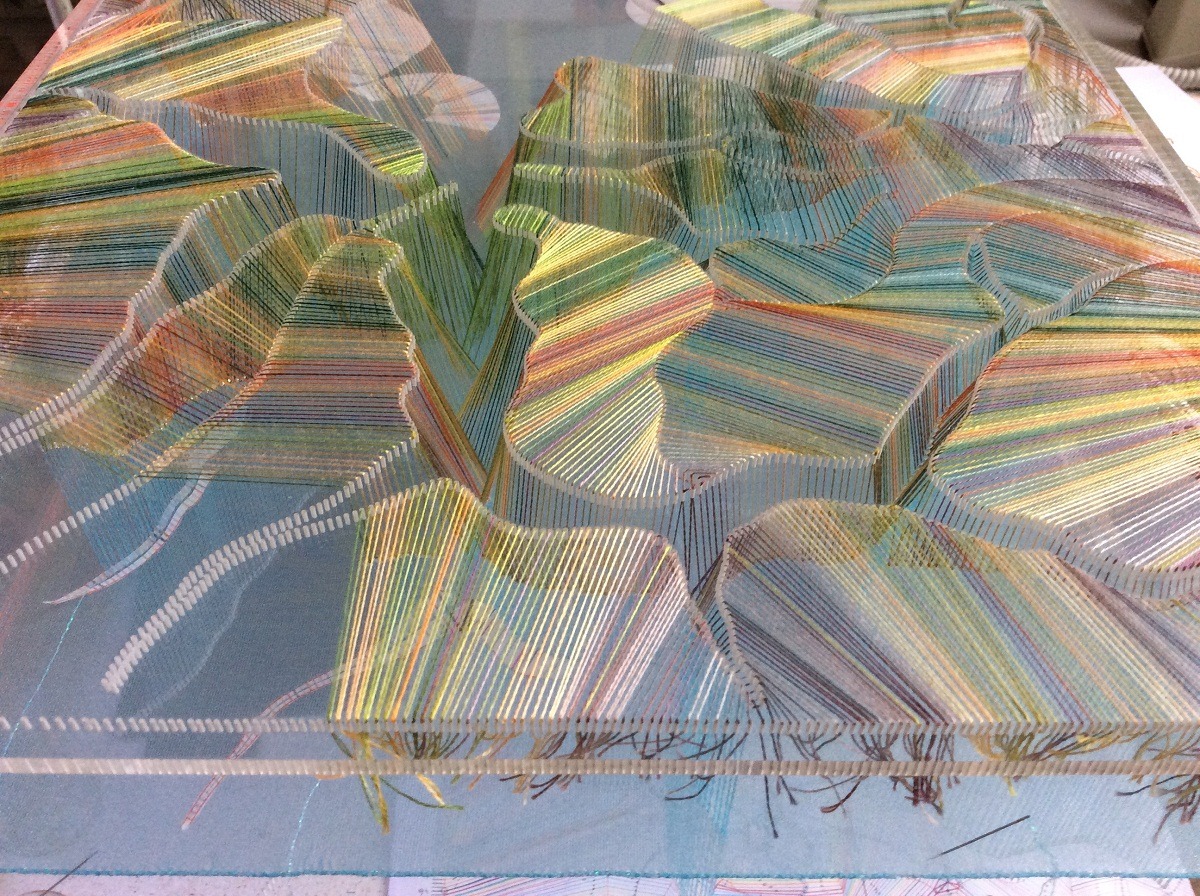
What journey has the piece been on since its creation? (Galleries, exhibitions, prizes, sale, reviews etc.)
The work was completed at the end of 2017 and I was delighted when it was selected for the 62 Group exhibition. By exhibiting the work it is my hope that it will encourage viewers to look at embroidery stitches in a new way, as three-dimensional objects with their own unique beauty.
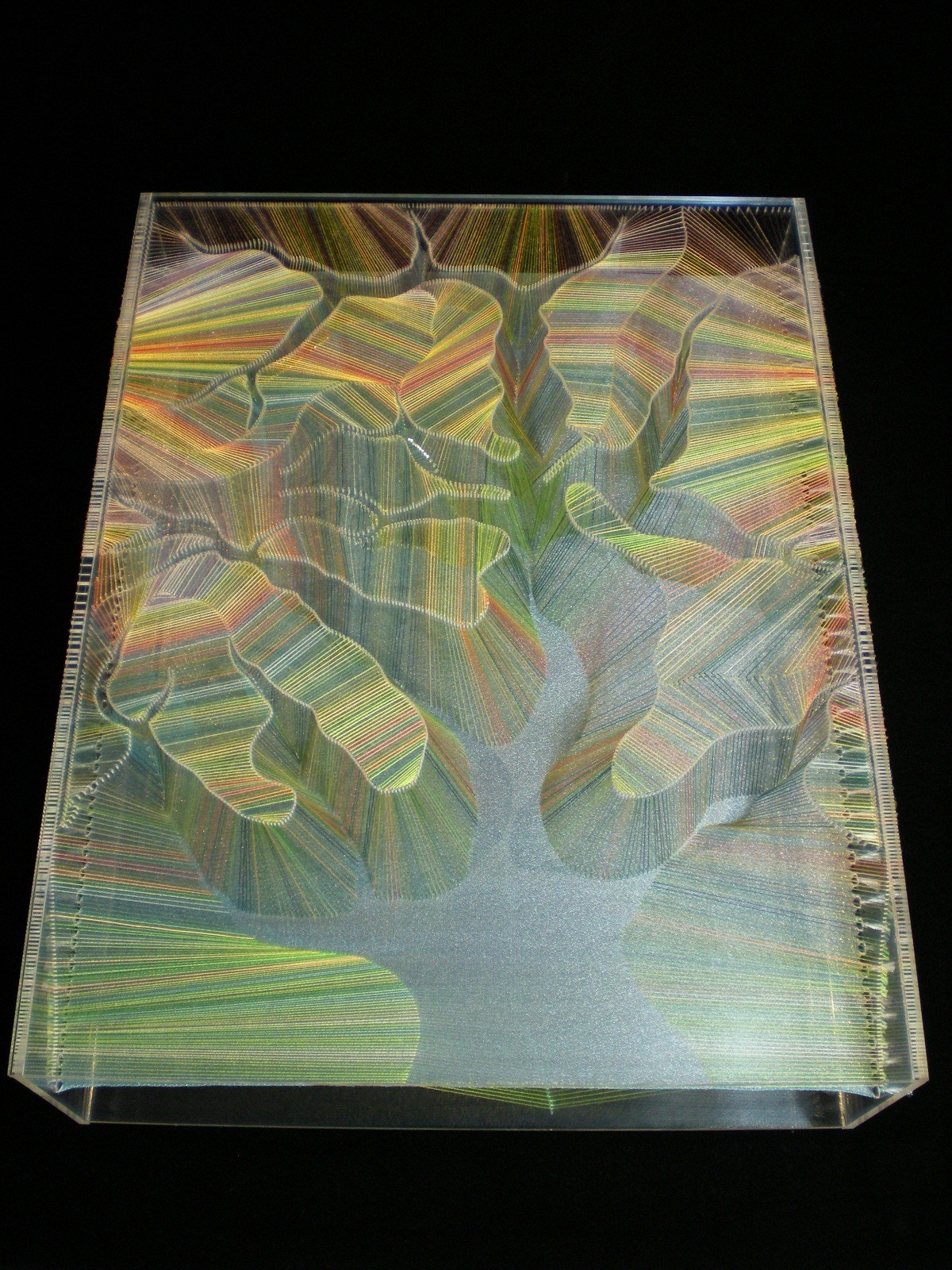
For more information visit www.isobelcurrie.com
Did you find Isobel’s process inspiring? Why not let us know in the comments below?
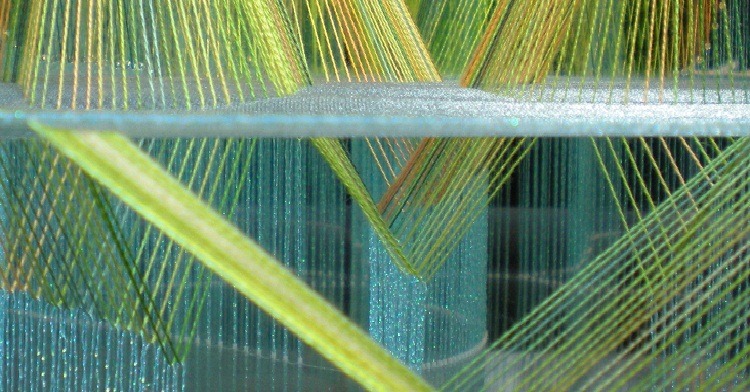

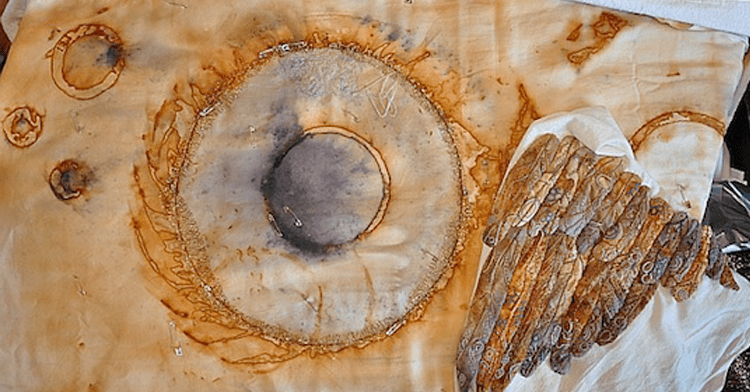
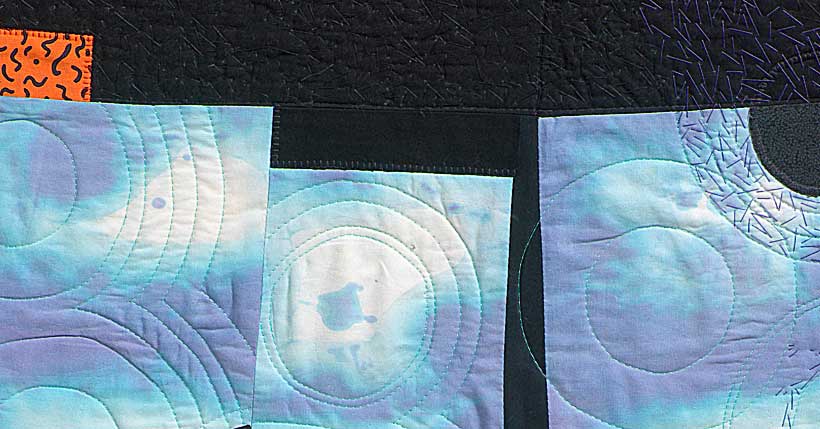
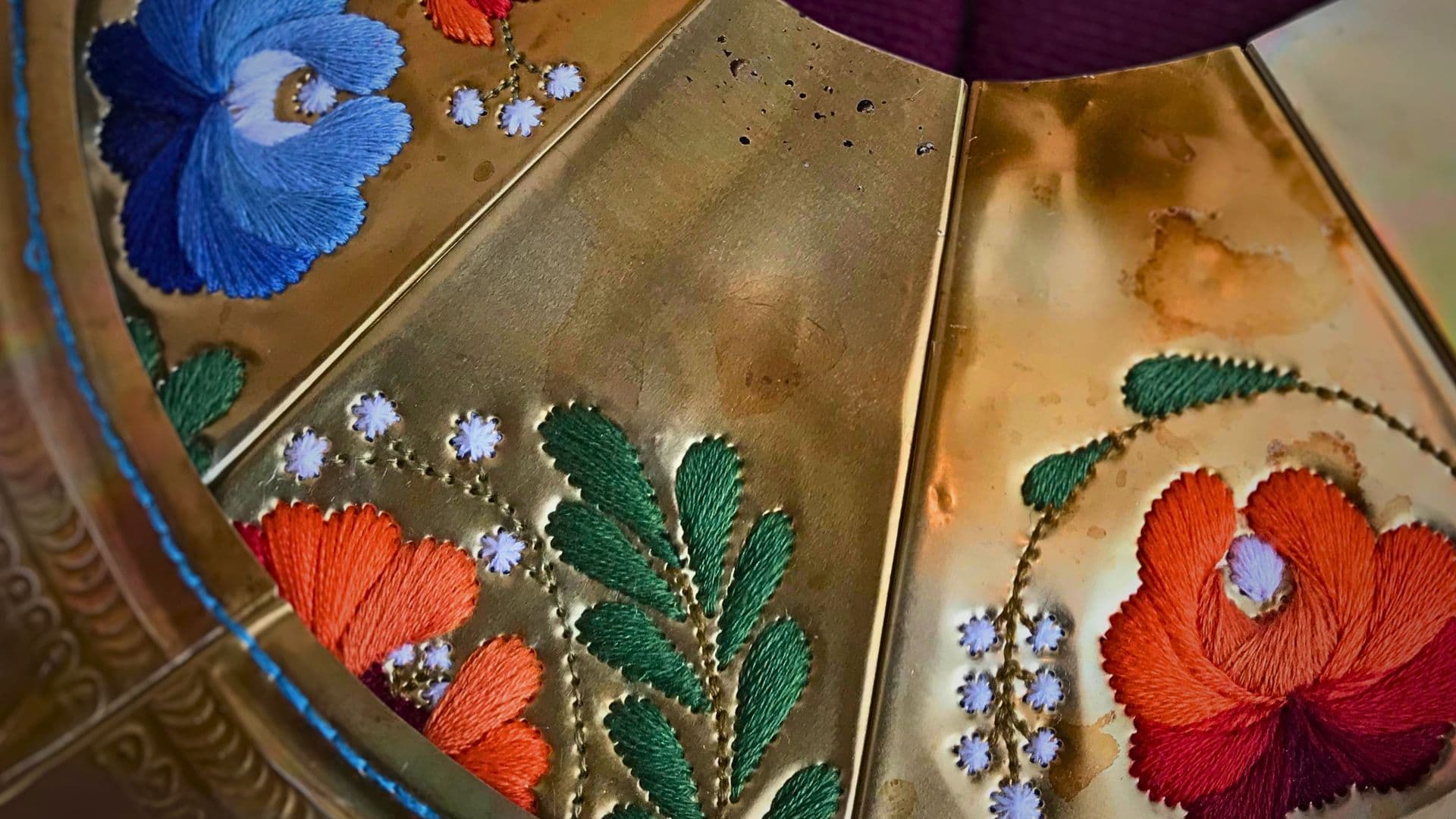
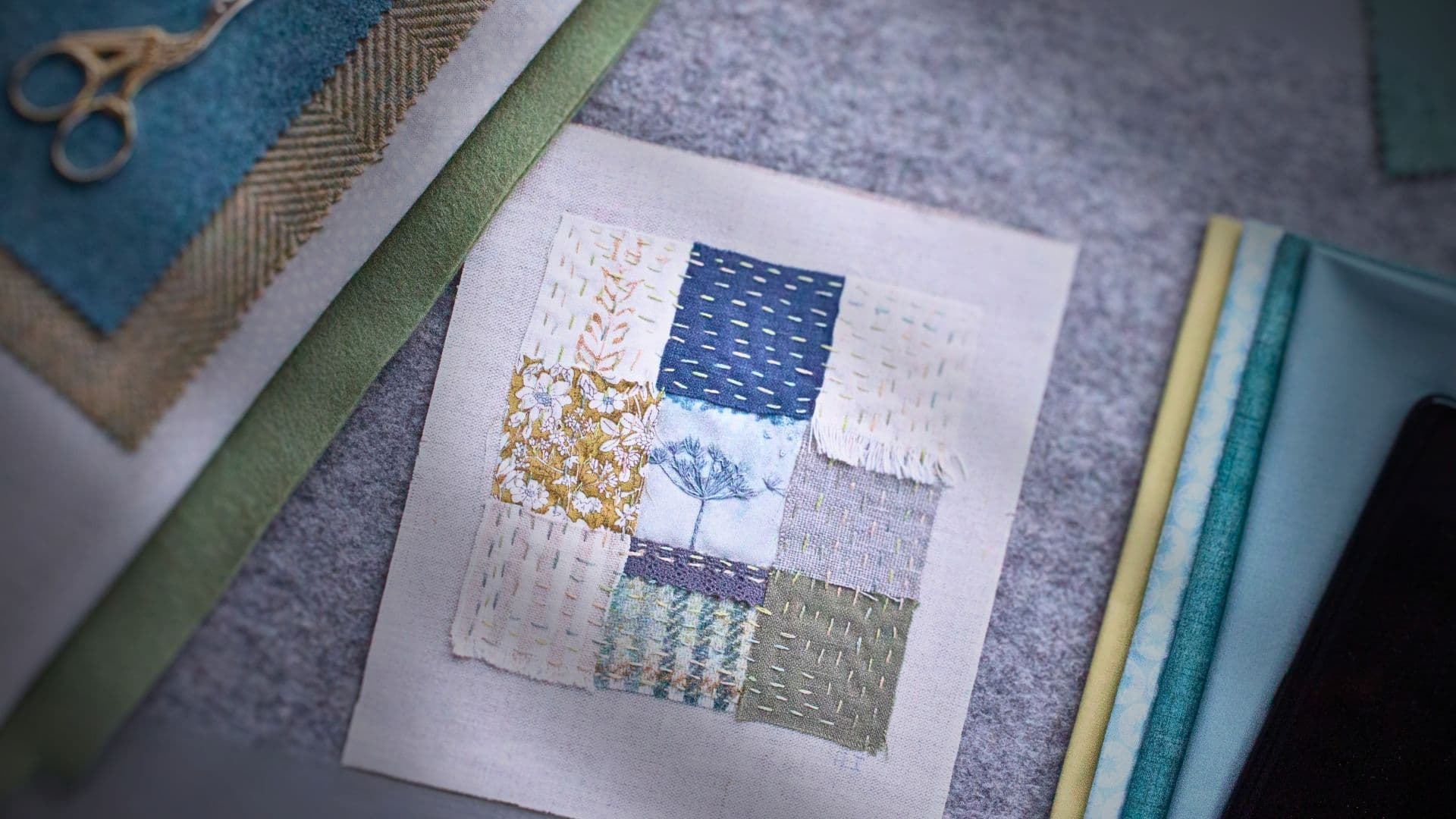

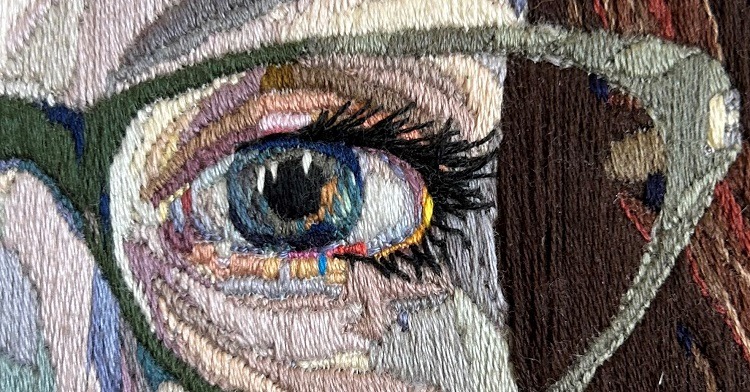
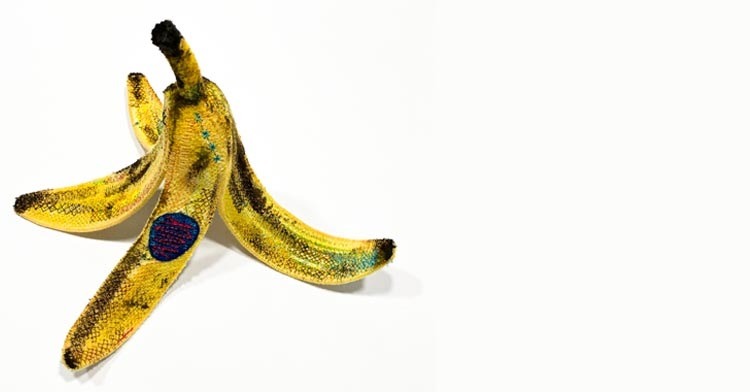
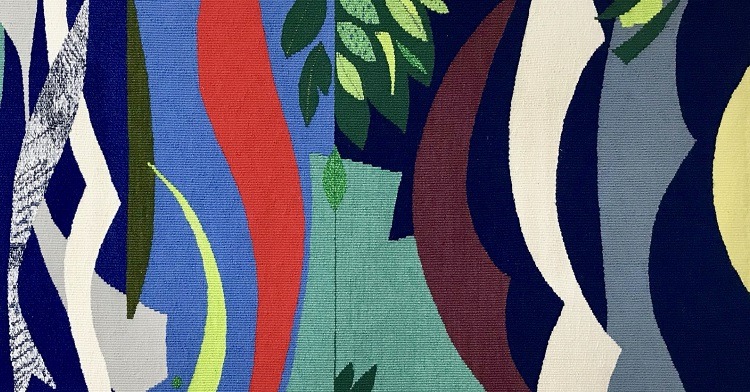
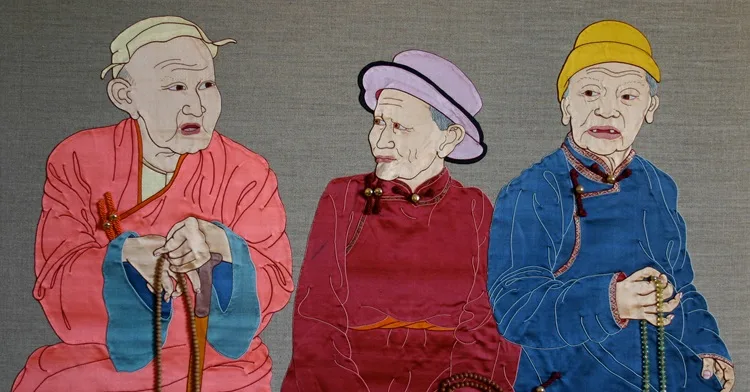
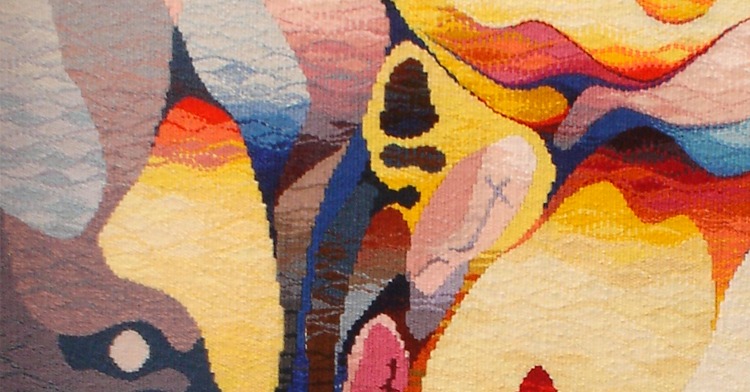
14 comments
Aliceanne
Stunning wish I was tiny so I could walk around and touch it.
caroline Hyde-brown
Amazingly intricate and such care and attention to detail!
Eithne
This is stunning.
My brain is fried just trying to imagine all the stages and the contortions you had to go through!
I want to walk around it to look at it as I move.
Jackie Day
I have always been interested in 3D embroidery. I guess I want to make my work sculptural
Jackie Day
I have always been interested in 3D embroidery. I always want my work to be sculptural
Lyn Mills
This is truly original and inspirational work. Your initial use of fly stitch to produce such a stunning 3D piece is amazing and it is lovely to see how you worked the entire piece using the landscape. Beautiful, thank you so much for sharing.
Rita Duncan
Fabulous work. Beautiful movement and colour. Very generous explanation of technique, which I feel is beyond my ability. Works of art.
Mary Williams
Saw this extraordinary art at the 62 Group Exhibition in Birmingham 2018. An unexpected experience while travelling to UK from Australia to go to Festival of Quilts. To find out how Isobel’s art is created just completes my awe of this artist.
Nicola
Wonderful wonderful work.
I am inspired with your new take on technique and materials.
And….why did you call it Fly Stitch?
Jennifer May Eurell
Totally amazing!
Debbie A
Beautiful piece of work and really inspiring. Set me thinking about the 3D possibilities when working with threads…
Karen Peake
A fascinating article on Isobel Currie describing her techniques, a very ingenious textile artist
Poppy
Beautiful work. Thank you for sharing it with us
Kathleen
Really fascinating and intricate work. Thank yo so much for introducing this interesting artist here!